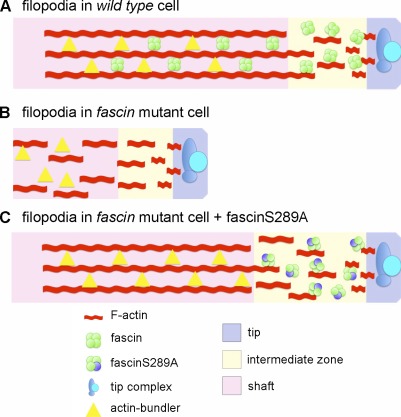Figure 5.
A model proposing a new function for fascin within the distal end of growing filopodia. (A) During filopodia initiation, filaments of actin are coalesced by proteins belonging to the tip complex. Fascin is then loaded onto the filopodia within a region we term the “intermediate zone,” which may be regulated by a cycle of fascin phosphorylation and dephosphorylation. Subsequently, fascin, or another bundling factor, can help stabilize the actin bundle within the shaft of the filopodia. (B) In the absence of fascin, the tip complex may initiate filopodia; however, the process is aborted without the presence of fascin within the intermediate zone. (C) The S289A mutation stabilizes fascin localization to the distal end of the filopodia. Despite an inability of this mutant to bundle actin itself, an unknown role of fascin within the intermediate zone allows filopodia to elongate if another actin-bundling factor is present.

